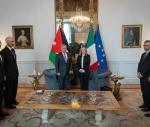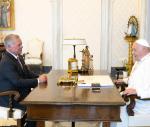You are here
Jordan leads MENA in gender equality
Jan 17,2019 - Last updated at Jan 17,2019
No country in the world has so far realised complete gender egalitarianism. Arab states are still lagging behind and many of them rank at the lowest levels, according to the 2018 Global Gender Gap Report. In the past few years, Jordan has set a very good example with improving the role of women in developing local community, and some of them have become decision makers at a young age.
The concept of women empowerment is a significant matter for the development of any community. At present, Arab communities need men and women to build their societies and shoulder their responsibilities to shape the future. Many experts believe that the less gender equality, the more decline in economic and political development.
Thus, empowerment is to provide women with greater opportunities to help build their communities and to participate in decision-making process, which helps reduce the gap between both genders. Some studies in developed communities prove that women have been the main force of growth over the past decades, and that their contribution to GDP has far exceeded men’s, with expectations that women’s income will reach $22 trillion by 2021.
On average, women in the MENA region have a higher tendency than men to enter universities, however, their share in the labour market is only 26 per cent, much lower than the average for low- and middle-income countries, which stands at 40 per cent. In other words, this is an indicator that many well-qualified women do not enter the labour market.
In order to improve women’s conditions, governments in the MENA region should address some points of concern. The first is to rationalise religious discourse against women, as they are a key contributor to progress and advancement of any community. The solution to women’s issues should be associated with the rational development of industrial, agricultural, financial and commercial projects. There is a dialectical correlation between flagging economic conditions and women’s employment and status. Women are naturally the first victims of poverty and unemployment in the community and in the MENA region this matter exacerbates.
Disparity between both genders starts with education, health, employment and economic activities and their role in leading positions, as well as participation in political life. As in some Arab countries, Jordanian society has experienced significant economic, social and political changes in the past three decades. Some Arab countries, including Jordan, have turned to democratic approaches, which have led to the increased participation of women in public and economic life.
At the political level, the participation of women in political life is much better than before, as the government has noticed the importance of women’s role per se, which requires their active partaking, as they form a large and important part of the community.
In terms of women's participation in political life, statistics available on Jordan reveal that 25 women are in leadership positions; 6.6 per cent of ministerial portfolios are taken by women, whose role, in first rank positions, in political parties has exceeded 6 per cent and they occupy 1.5 per cent of leading positions at both private and public sectors. Official figures show that Jordanian female ambassadors account for 11.1 per cent of the total number of ambassadors; that is, one out of nine ambassadors, which is amongst the highest worldwide.
Furthermore, the percentage of women stood at 15 per cent of the parliament, 21 per cent in parliamentary committees, 32 per cent in municipal councils, 22 per cent in professional and trade unions,18.5 in the judicial system and 15 per cent in local councils.
Department of Statistics figures reveal that the total number of females in Jordan was 4.7 million of the total population in 2017. This forms 47.1 per cent of the population. The percentage of females under the age of 15 is 35.6 per cent of the 4.7 million. In contrast, the percentage of young females in the age group 15-49 is 52.5 per cent. This percentage drops to 12 per cent in the females above 50.
Jordan has witnessed tremendous development in the past few decades in the field of female education and gender equality. Female education is one of the most important social rights and is one of the most important indicators of equality between men and women towards sustainable community development. The data of the second round of the 2017 Employment and Unemployment Survey indicate that the rate of illiteracy among Jordanian females aged 15 and above was 6.9 per cent. In contrast, the percentage of educated females in the same age group was 93.1 per cent.
The pathway is still long and hard for women. No one should claim that there is growth, progress or stability while women are less empowered. During the two world wars, men were fighting and women were building their communities, raising their children and educating them to be the leaders. Women were running the factories to revive the declined economies of their countries.
The writer is a consultant, senior political and media adviser and the executive director of Geostrategic Media Centre-USA. He contributed this article to The Jordan Times












